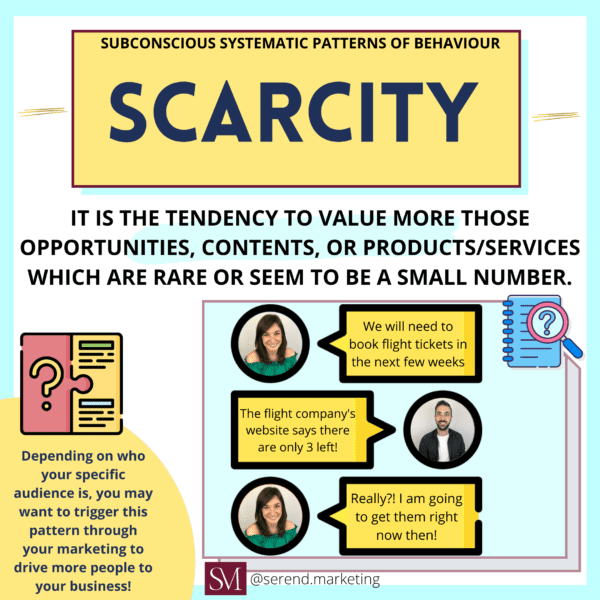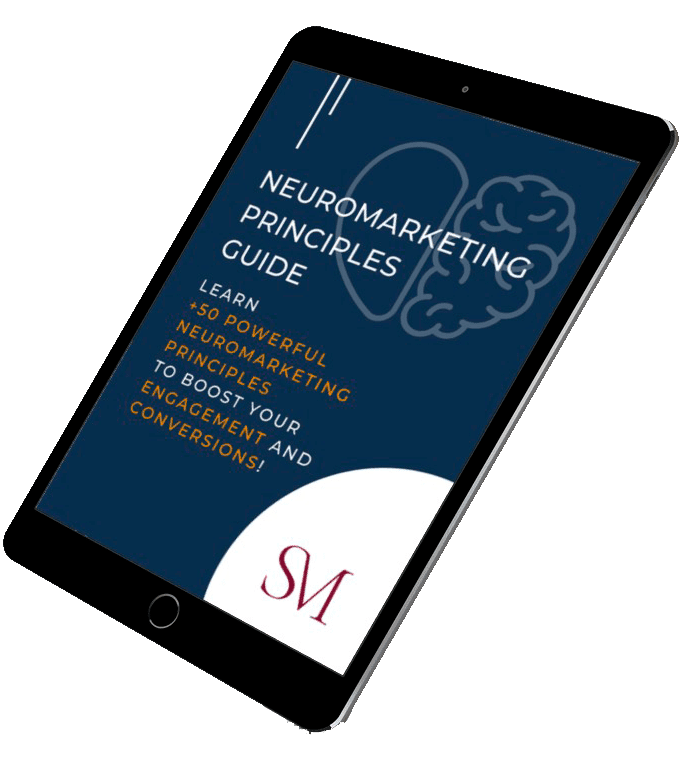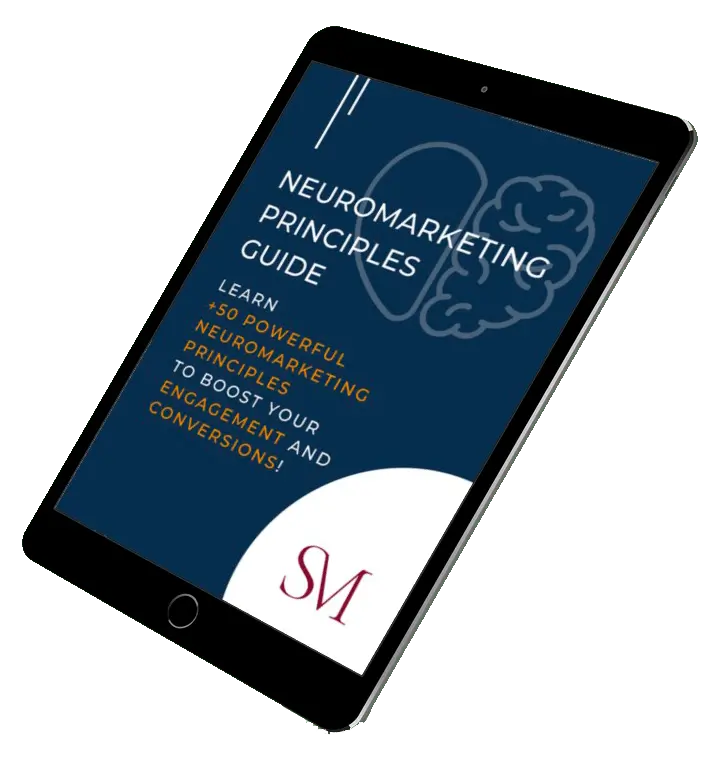Time passed since when businesses and marketers were spending an elevated amount of money on bus stop bench advertising and expensive events sponsorship deals just to promote their brand.
Nowadays, the marketing standard is to spend as little as possible while still achieving remarkable results.
Not the easiest goal, is it?
However, despite this highly challenging condition, how do businesses and marketers manage to do so?
The answer lies in only a few words: Neuromarketing & Psychology Science.
By empowering your marketing with neuro-psychology principles to design creative hacks and incorporating these techniques into your campaign, it is the most effective way to achieve maximum results with minimal expense.
This is possible because of the major efficiency your marketing acquires by utilising specific psychological techniques to trigger your unique target audience driving emotions.
The goal of this strategy is to find out how your target audience’s brain works, why they behave the way they do and discover the triggers that would drive in more leads and conversions.
This is the same strategy that big established companies use, and it’s the reason why they keep their standards at a very high level.
If you want to know more about this, click here to learn how Amazon uses neuromarketing and psychology techniques to be the best online retailer. à link to Article Amazon use Neuromarketing.
What is Neuromarketing?
Neuromarketing is the branch of marketing that combines marketing strategies with neuroscience concepts.
This concept finds its foundation and reliability from the use of technology, such as brain imaging and brain scanning, alongside psychological analysis.
Through the investigation of brain activity, it has been possible to discover the responses of their subjects on particular marketing stimulations like, for example, packaging and advertising.
This approach results to be very effective as it gets rid of the guess-work included in the design and development of successful marketing campaigns.
Basically, neuromarketing helps in stimulating the parts of the brain that would prompt people to subconsciously move towards your products or services.
Depending on the main driving emotions your specific target audience has, there are specific neuromarketing techniques able to trigger them and lead a higher percentage of potential customers towards your business.
It all comes from getting to know your ideal clients at a deep level, uncovering hidden driving emotions and behavioural patterns, to then implement this information into your marketing campaign through neuromarketing and psychological techniques.
Even though neuromarketing began around the 1990s, this strategy has been used a lot more recently and is perceived as a key tool for marketing success in the years to follow as it is the key to make your business stand out in a so hyper-competitive world like the one we live in today.
So, now it’s time to see 4 effective neuromarketing hacks you, as everyone else, always fall into.
1. Incorporate a Human Component
People get mainly engaged when they feel identified and when they feel they can trust who is behind the shared message.
At the end of the day, it’s all about that, isn’t it?
By showing a “human” part in your branding, you make your message stand out among the millions of corporate-sounding companies that you can see online today.
Incorporating a human component has the power to make your potential customers feel like behind that computer screen there is a real person, not a sort of robot that sends the same message to everyone.
This makes this technique a powerful neuromarketing technique able to set your message apart from all the other companies and to grab your target audience’s attention more efficiently.
Adding a face (or, even better, more than one) to your business name makes it more trustworthy and authentic to ideal clients.
Including a “human” component in your marketing strategies makes your brand more reachable and accessible to your target audience.
This, of course, influences positively your ideal customers’ decision making towards your business.
It has the power to create a connection with your target audience, that cannot be matched by any logo or other image.
It is a simple as extremely effective.
2. Utilise the “Scarcity Effect”
The scarcity effect is a key part of high-converting ads.
This technique leverages the tendency that most people have to value more those opportunities, contents, or products/services which are rare or seem to be a small number.
Basically, the more limited the product or service is, the more irresistible it becomes.
This principle is as effective as it is a largely used neuromarketing hack.
The goal of leveraging the scarcity effect is to convert an ordinary shopping activity into an exciting and stimulating one by stimulating the primal will of human beings to desire items they consider as limited.
The strength of this neuromarketing principle lies in the ability of your marketing strategy to turn a product or service into a “must-have” one.
As per its characteristics, the scarcity effect continues even after the shopping experience. In fact, after the customers finalise the purchase, the thought of having a rare commodity has the power to make them value it even more.
That’s it. Items that customers experience through the scarcity effect would always have a “special” place in their minds.
Big established companies make this neuromarketing technique one of the principal key factors for their successful marketing and business results.
Amazon, for example, masters the art of the “limited time offer” alongside other neuromarketing techniques. Their customers have been seen to actively shop more when they see the countdown timer on the items’ page.
If you want to learn more about how Amazon uses neuromarketing in their digital marketing strategy, click on this link: 3 Neuromarketing Strategies Amazon Uses To Be The Biggest Online Retailer.

Follow Serendipity Marketing On Instagram to see more content like this
3. Press the Pain Buttons
Another extremely effective technique within neuromarketing that makes ads highly engaging is the fact that consumers respond more to pain than pleasure.
The Reward Punishment Tendency highlights the fact the human beings are moved by two main forces: the need to avoid pain and the desire to gain pleasure.
Despite the common practice dictates that efficient marketing must always show the benefits and features of a product or service, neuromarketing reveals that potential customers are more responsive to those things that might hurt them over those that would please them when it comes to purchasing decisions.
Neuromarketing experts reveal that, when it comes to avoiding pain, the response of the human brain is three times stronger than when it’s time to seeking pleasure.
What does this mean then?
It basically means that your ads strategy should focus more on showing how your product or service could relieve your ideal clients’ pain instead of on the pleasures their target audience can get from what you offer.
Learn +50 Powerful Neuromarketing Principles to Boost Your Engagement and Your Conversions

4. Work with Colours to Stimulate Emotions
The use of colours has a transformative effect on your potential customers’ brains.
We all grow associating each colour with specific actions and emotions.
For example, if I say red, what is the first thing that comes to your mind?
Probably love or passion, isn’t it?
This makes the use of colours a great way to lead your target audience to feel what you want your product or service to convey.
The key point in this neuromarketing technique is to get to know the main driving emotions that will lead your target audience towards the action you have designed for them to take in your marketing strategy.
As red is mainly associated with love, passion, excitement, every other colour communicates a certain emotion to your target customers. So purple is generally perceived as individual and sharp. Green instead communicates more freshness and reassurance. Meanwhile, yellow or orange represents hope and optimism.
Depending on your target audience driving emotions influencing their purchase decision making, you will want to use specific colours, associated with layout and copy to stimulate those specific emotions.
These 4 neuromarketing techniques used in line with deep knowledge of your specific target audience have the power to make ads and landing pages highly-convertible.
If you want to achieve higher results with your ads, it’s time to implement them into your marketing strategy.
How can you implement efficiently these 4 techniques in your ads and marketing strategy?
Serendipity Marketing, as a leading neuro digital marketing agency London, can help you with this. Everything we do for clients is based on proven psychology and neuroscience researches.
Our unique methodology, which allows us to be a leading neuro digital marketing agency London, mixes marketing strategies with psychology science, allowing us to make the right emotional impact on any business target audience leading them to achieve their goals.
If you want to uncover your target audience deep hidden driving emotions and behavioural patterns and empower your ads and marketing strategy, contact Serendipity Marketing.



